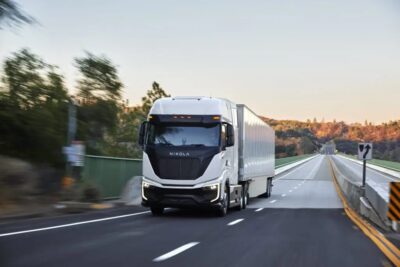Trump drops fuel-efficiency targets from 5% to 1.5%
The President of the USA, Donald Trump has just dramatically reduced fuel efficiency standards. These are now only required to increase by 1.5% each year through model year 2026 instead of the 5% annual increases introduced in 2012 by the Obama government.
The new SAFE (Safer Affordable Fuel-Efficient Vehicles) regulations, formulated by the US Department of Transportation’s (NHTSA) National Highway Traffic Safety Administration and the US Environmental Protection Agency (EPA) were published today. These considerably more lax regulations mean that one of the USA’s strongest efforts to protect air pollution, climate change and reduce US-American dependence on fossil fuels will be outdated before it has even come into force.
Needless to say, the new, laxer laws amount to tonnes more CO2 production from the country that already has one of the largest CO2 footprints in the world, both per capita and as a whole. Not surprisingly, the new regulations have elicited sharp criticism from across the globe.
The new targets work out for drivers as 40 mpg or 5.88 litres/100km. Converted to the CO2-based EU limits, the new US target corresponds to CO2 emissions of over 136 grams per kilometre. The average in the EU – also one of the world’s more sizable CO2 emitters – is 95 grams or 4.1 litres of petrol per kilometre.
With the new regulations, the American standard will be lower than those of the European Union, China, India, Japan and South Korea. With regard to international markets, this may present challenges to the American auto industry. While other international automakers are pushed to develop high-efficiency, low-pollution vehicles, their US-American counterparts will be able to focus on increasingly outdated fossil-fuelled vehicles.
The Trump government justifies the move by saying that cars with the necessary fuel-saving technologies would become increasingly expensive. “Today, President Trump is keeping his promise to car workers three years ago to revive the American auto industry by revising the costly, increasingly unattainable standards for fuel economy and CO2 emissions from cars, and that’s exactly what the rule for safer, more affordable, fuel-efficient vehicles is achieving,” says Secretary of Transportation Elaine Chao.
Analysts surveyed by the New York Times have said that the new consumption standard will bring more uncertainty to the industry in the long term. In fact, it seems that the Trump administration itself was hindered by delays and difficulties to reduce the target in a way that would adhere to scientific consensus and be legally defensible.
According to the New York Times, an internal economic analysis from the Trump government itself concluded that the rule would harm consumers more than helping them. Although the new target would lower the prices of new cars and light trucks by about $1,000, it would also increase the amount that consumers would pay for fuel by about $1,400.
In July last year, VW, BMW, Ford and Honda signed a framework agreement with the California Air Resources Board (CARB) to reduce emissions despite the Trump government’s intended disassembly of planned fuel efficiency targets. The planned emissions requirements were more stringent than the Trump administration rewrite but looser than the Obama-era rules. At the same time, even carmakers who were in favour of reducing the targets set in 2012 also pleaded that the administration does not reduce these too drastically, because it is likely to embroil the government in endless legal battles and leave carmakers with ongoing uncertainty.
Indeed, Ann Carlson, a professor at the University of California in Los Angeles, said the legal fight will be “one of the hardest fought, in part because it’s the most significant”. She also suggested that the big beneficiaries are really just the oil companies.
Oil prices have plummeted recently in both a price war between Saudi Arabia and Russia as well as drastically reduced usage during the Covid19 pandemic. With these prices, the already deeply in-debt US American shale oil industry is pushed way below cost price. It would not be far fetched, to think that Trump’s aim is more to save American oil companies currently feeling the squeeze.
With US energy policy precariously resting on the fragile existence of the shale oil industry, Trump’s new regulations would further weaken consumer options and increase fossil fuel dependence in a highly unstable oil market environment.
Update 7 April 2020: Reuters reported that this week, Swedish vehicle-maker Volvo wants to join the manufacturers’ alliance with Volkswagen, BMW, Ford and Honda. Volvo confirmed they were in talks with California to reach a voluntary emissions agreement more stringent than those now implemented by the Trump government. Volvo said a deal with California “will serve as a national path forward.”
epa.gov, theguardian.com, electrek.co, nytimes.com, reuters.com (update Volvo)





3 Comments